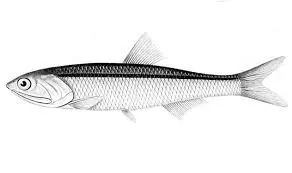Introduction:
The Peruvian Ball Fish is a unique creature that has gained attention across the globe. It is very interesting and due to its weird traits and eccentric behavior, it earns attention from people who admire marine life a lot. In this guide, we will cover everything there is to know about this exotic fish, from its distribution and physical characteristics to its conservation and even cuisines.
This article will also deal with associated keywords such as the question of whether the Peruvian Ball Fish exists or is a hoax, its association with Ragfish eggs, and several other questions regarding Peruvian Ball Fish’s eggs which are its most popular. Let’s find out why this fish has piqued the interest of many aquatic fans worldwide.
Peruvian Ball Fish: The Most Comprehensive Guide of This One-of-a-Kind Fish
In the aquatic world, the Peruvian Ball Fish is quite fascinating because of its unusual characteristics and the enigma of its history. This species is also characterized by its spherical shape and colorful patterns. However, the authenticity of the Peruvian Ball Fish remains the subject of much debate, with some insisting it is a fake fish while other people claim to have seen it. We’ll be delving into this more as we progress through the guide and talk more about the different aspects that make this fish appealing to researchers and hobbyists alike.
What is a Peruvian Ball Fish? Characteristics, Habitat, and More
A very rare type of fish, the Peruvian Ball Fish is different in both looks and lifestyle. This species is normally found along the South American coast It can be mistaken for some other small round fish because of the unusual shape of its body. Because it is often brighter in color than other fishes, it has patterns on its abdomen. Due to its unusual form, some have referred to it as a variety of round-bodied fish. The species is believed to have common traits with Hamsi but it isn’t the same type. In this segment, you will discover information about its other adaptations, the environments it prefers and the physical characteristics that set it apart from others.
Peruvian Ball Fish: Fascinating Facts You Need to Know
Hailing from South America, Peruvian Ball fish do not have the hailing of binding or weaving localities, hence supporting their narrow distributions. OOversizing60.51cm on average as in height is quite slumbered and rounded to around Elder Balon’s head herring as being deemed to extend the body as long as lacking.
When pursued by predators the coloring pigments of their body reduces to aid camouflage. Edible fish utilize small crustaceans and plankton, average in each meal, while, ball herring moves around through the middle of the fish with further details provided. Ball herring is known to dwell along the tropical waters of Peru as well as nearby regions. They only can be seen rarely due to their shallow-depth habitats that intriguingly leave no definite predation pattern established. Coral and herring’s vibrant colors extend to its thorns due to its extensive core group. Herring’s form due to the affected shape reaching elliptical is what sets the Peruvian type apart due to their slow swimming speeds.
Reasons and Bespeak caution with no statistical fingerprint insightful deep insight over weaving regions shared.
Rarity: They are quite rare and generally not present in ordinary pet stores.
Peruvian Ball Fish Habitat Where to Look for This Incredibly Rare Species
The Peruvian Ball Fish is mostly found in the tropical waters along the South American coast, mainly Peru. It lives in warm, shallow waters close to coral reefs where it can conceal itself in corals and plants. These fish occupy an area that is abundant in nutrients, necessary for their diet of small organisms like plankton. The habitat has a vital position for their breeding cycles and even their camouflage, which shields them from their natural predators. Should you be diving near Peruvian reefs, you may be lucky to see this fascinating fish moving around in its environment.
Expert advice for taking care of a Peruvian Ball fish.
This fish is not widely kept as a pet, however, if one has to be gouged into having one, be sure to provide a spacious aquarium filled with warm and filtered water. They might require some coral or plant decorations too, as that would help them feel safe and recreate their natural habitat. Try to maintain a balanced nutritious diet consisting of small crustaceans like shrimp or krill, along with making sure the fish don’t get overfed as that can lead to health complications. This species of fish is extremely sensitive to changes in pH levels and temperature just like many marine species; therefore it is important to keep the water quality in check.
10 Interesting Facts about the Peruvian Ball Fish
- The most distinctive feature of a Peruvian ball fish is its shape, as it is known to have the shape of a ball.
- Peruvian Ball Fish has a diet that consists of predating plankton and crustaceans.
- This fish’s natural habitat is not found in a typical home aquarium, therefore having it as a pet is not quite practical.
- Peruvian Ball fish is known to originate from the waters of South America.
- As a result of its body shape, a Peruvian Ball fish is not able to swim fast.
- This species was quite interestingly endowed by nature with the ability to camouflage; They are all vibrantly colored.
- A Peruvian Ball fish’s reproductive process is related to the patterns in the eggs of a Ragfish.
- Many people can confuse this species for other rounded bodyfish as they are quite great mimics.
- This fish is known for its diverse range of colors as its body is covered with a large number of colorful patterns.
- Although this fish is found predominantly around Peru, it is important to note that this species does not have an extensive range.
Peruvian Ball Fish Identification Guide: What do they look like?
It is challenging to identify the Peruvian Ball Fish, as it is rounded like other rounded fish. One can identify it through its body which is small and rounded as well as patterned brightly. It generally prefers to stay at the bottom of the ocean, or the coral reefs, hence its bright colors assist it in camouflage. The main distinguishing difference between it and Hamsi fish and its relatives is that it has a circular shape. Its pattern of swimming can also be useful, for it swims at a slow pace, and thus is easier to see in shallow water.
How do Peruvian Ball Fish Eat and what do they include in their diet?
Peruvian Ball Fish tend to eat a variety of minuscule sea creatures, including shrimp and plankton. They tend to be more of bottom dwellers resulting in scavenging amongst the corals and plants for their meals. Since they are very peculiar in their feeding habits, and also seek meat sources with a healthy percentage of protein, it can be hard to feed them while in captivity. Their feeding style and the type of food they enjoy eating make them quite interesting to marine biology experts.
Delving into the Peruvian Ball Fish: Peculiar Distinctive Behaviors As if there was not enough to worry about protecting the Peruvian straight nose, the Peruvian Ball Fish or the Oplegnathus bon gars is an equally strange fish native to the Peruvian reef or some would call it the Peruvian litoral as it is located just off the coast of Peru.
Caring for the Peruvian Ball Fish: Steps We Can Take to Protect Such An Endangered Species Sharing the same date of formal confirmation as the day of mourning for the International Community Sivash and Taylor were found occupying separate portions of the Fish room, on the Assumed dates of Ayres’s death and Eurygraphius unicolor’s acknowledgment. They came from the same room which was filled with corals: The Peruvian Ball Fish is indeed an interesting being and a must-know for aquatic lovers.
The Peruvian Ball Fish is a popular subject among marine life enthusiasts due to its peculiar physique and unique hierarchical behavior. This species is quite different as it’s a round fish encompassed with vibrant colors and strangely enough ha, has quite a distinct figuring A few have diasporas increasing the chances of them being extinct thus fascinating the imaginations of fish lovers and aresearchersWhat’s the current status of the species? Elaborate on why this is a sensitive topic, especially for aquatic life lovers.
Even though the species is not endangered as of yet Ball fish perPerues have its restrictions as it’s affected by climatic change and human effects. Efforts are being made to figure out how many exist in specific areas and how to loathe s of habitat effaffectsem. To help keep their natural numbers in check, the initiatives aim to safeguard coral reefs and oceanic biomes that are the ideal natural environment for this uncommon species.
Keeping Peruvian Ball Fish as Pets An Effective Guide
A Peruvian Ball Fish is not the easiest species, to keep as it does have specificwhouirements. They need warm, clean water to thrive, they need a lot of space and a diet that compares to the one they are used to. They are also quite hard to find in pet stores due to them being rather rare and their removal from their natural habitat is rather looked down upon. Therefore, being an owner of such a pet requires one to understand the required level of care and, attention that this reflective pet would need.
Conclusion
To sum it up, the Peruvian Ball Fish seems to be a species that is both interesting and out of the ordinary. Its sphere-like shape along with bright vibrant colors, and its distinct environment give great importance to this species in the aquatic category. This sphere-shaped color-changed fish certainly isn’t a common pet but its survival in its wild environment is essential to the peace math aquatic ecosystem. It is up to us to draw people’s attention to conserving their infrastructure so that the love and care we show for this magnificent species do not go down the drain.
FAQs
Q1: Is Peruvian Ball Fish real or fake?
A: The Peruvian Ball Fish is indeed real, however, the very fact that they are rare has led people to question their existence.
Q2: Where is the Peruvian Ball Fish found?
A: It can be found in subtropical waters surrounding Peru. Is owning a Peruvian Ball Fish an option? Yes, but it is difficult because of how exactly the fish is cared for and the region where the fish is found.
Q3: What is the level of nutrition of the Peruvian Ball Fish?
A3: Plankton, small shrimp, and other minute marine creatures are part of its feed range.
Q4: Does the Peruvian Ball Fish face extinction?
A: This fish is not threatened but its loss of habitat threatens its survival.











